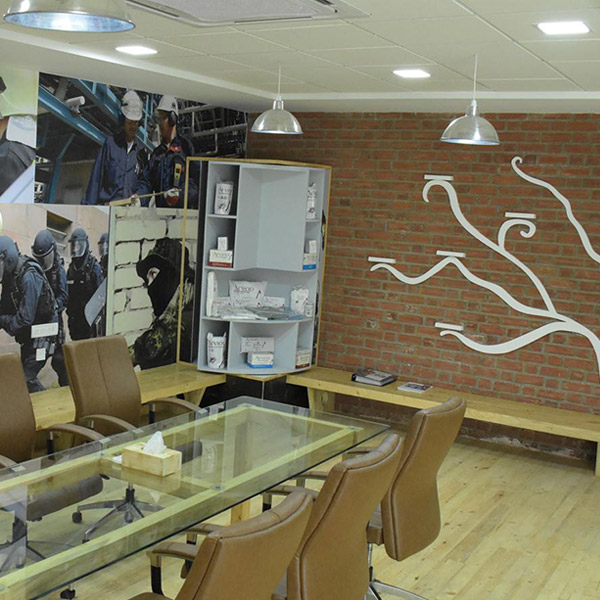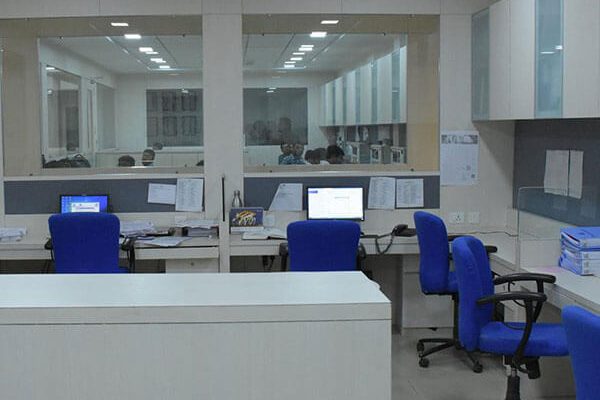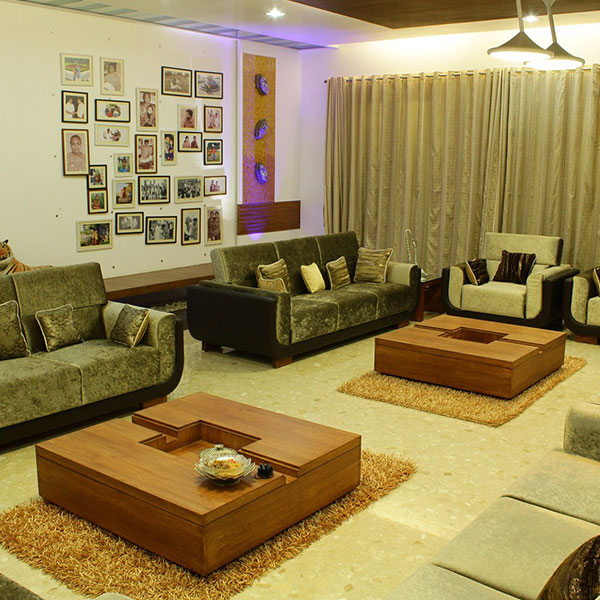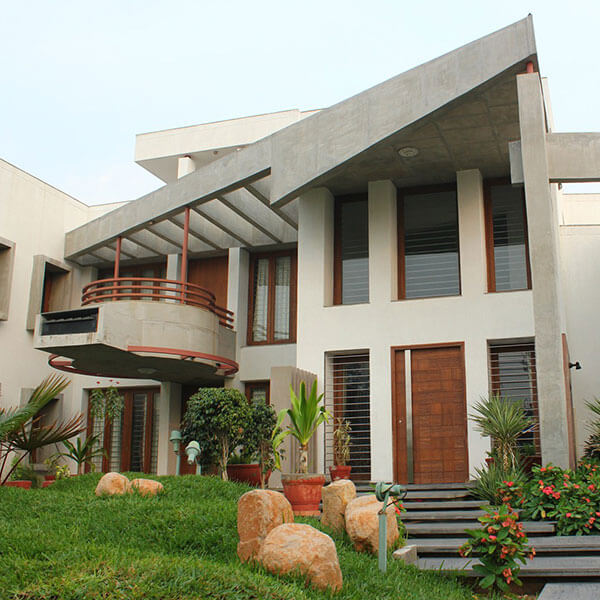FAQs
Visual access to the outdoors improves
both task performance and attitude.
Interior designers can influence our emotional health and brain functioning.
Certain colors can make us feel warm or cold or even chatty!
Some colors have been linked to aggression.
Different pattern scales for wall-covering and carpet have been shown to influence children’s play behaviors, and the scale and enclosure of study spaces has been shown to influence the task performance of children with attention deficit hyperactivity disorder.
There are many ways in which our interior environment contributes to our health and wellbeing, and interior designers make many of these critical decisions.
“Architects see form, light, and color” whereas the rest of people see “walls, floors, doors.”
“Emotions are pulling our clients and end users in another direction.”
“People look at buildings with emotions, not intellect.”

Interiors should be designed with humans in mind, who understand space at an intrinsic level as a savannah. The ground should be darkest, like a path, whereas the mid-range, eye-level colors should be neutral, and the ceiling should be light, like the sky.
“Humans feel most comfortable in spaces that follow nature, instead of monochromatic bubbles.”
Spring, summer, early autumn photos with lots of green are effective, while winter scenes won’t have much effect.
Photos with signs of humans in the foreground are important, as they show “this is a safe place.”
More companies need to think through the effect of colors.
One client had a dull conference room that actually stymied creative discussion.
Simply painting a wall orange “lifted energy levels.”
McDonald’s has known this for years, which is why they paint all their stores in “high-energy colors like red, yellow, and orange so you eat more, faster.”
Gyms should similarly be painted in brighter, exciting colors to get people to exercise more.
How to Determine if you Need an Interior Designer
- Your home should be a reflection of your personal style, lifestyle and attitude towards life.
- If you look around your home and it is lacking life and personality you may need to hire an interior designer.
- If you once liked your space, but now you and your family are at a different place in life and need an outsider’s view and touch, an interior designer can help.
- Some people have the time and know how to put towards choosing décor, colors, and finishes together while others get overwhelmed with the number of available color choices, and styles.

Don’ts during design your space:
- Recognize that the living room can be used as both a private (sharing intimate moments with a partner) and public (hosting parties with friends) space.
- Create living room spaces that foster comfort, relaxation, and refuge.
- Recognize that memories of time spent with family or friends in the living room may affect the connotation they have with the space during moments of solitude in the same space.
- Understand that hosting guests in the living room may include both formal (e.g., entertaining) and intimate (e.g., sharing personal stories) scenarios.
- Recognize that objects placed within the living room may create a connection to family, friends, or experiences during moments of solitude.

Why hiring an Interior Designer/Architect
is a wise and sensible choice
People believe that Architect/ Interior designer are only for the rich and famous or those with so much money that they don’t know what to do with it all. In reality they save you a great deal of time and money and headache medicine!
1. Save Money
It might sound strange that hiring someone to design your home would save you money since you have the additional fee of the designer, however
Mine makes a compelling point.
“Hiring a designer can help you to avoid costly mistakes that will not only help you save money but can increase the value of your home.”
Especially when selling your home – interior design is essential when listing your home.
It can help boost buyer appeal and set your home above the competition.
2. Professional Assessment
“A designer can give you a professional assessment of your situation, that will will lead to a solid plan of action.
The order of things in a design plan is key in determining what can be repurposed or should be edited.
This will not only effect the budget but help you to spend it more efficiently.”
A designer offers an extra set of eyes, but these eyes are trained to see and notice things that you may not.
3. Budgeting and Planning
A designer can keep you on budget and save you time and effort. A designer knows where to go for resources for everything related to your home. This will save you endless amounts of time researching products, brands and prices. A designer will have all this readily on hand, and should he or she not, will spend the time researching so that you don’t have to.
4. Liaison
A designer will be able to build “a stronger bridge between you and your other consultant or contractor early on and can head off design misses in your overall plan. This is crucial in managing time and money explains Devang. Also designers are trained to think about things we may overlook. “It’s so important that the lighting and furnishing needs are addressed before construction. If your living room sofa is floating in a the middle of the room you want to make sure you have the proper placement for floor outlets.”
5. Wide availability of resources
There are things available to designers that are not available to the general public in terms of connections, resources and general merchandise. By culminating these resources designers can help to make your space look more collected, unique and pulled together.
6. Contacts
“In addition to vendor resources, designers have many home improvement industry contacts. They can save homeowners time and headaches trying to identify reliable, contractors, plumbers and electricians for their projects.”
7. Wow Factor
Designers can help to give you the “wow” factor you’ve been looking for. They are trained to think differently, spatially and to see an overall picture that clients often cannot. “Thinking outside of the box is what designers do all day long.”
8. Home sale
A decorator can potentially add a great deal to the aesthetic of your home, which in turn can increase showings and sales. This increased appeal can exponentially speed up the amount of time your home sits on the market before it is sold. The benefit here is two-fold, a faster turn-around time and more money in your pocket.
9. A trained eye
“A designer is a professional with a trained eye that can automatically tell you if there is something wrong or right with a space. Having that immediate consult is a major advantage when making aesthetic decisions. It is the result of years of experience.”
10. Visual story-teller
Devang concludes with the fact that : “Interior design is a skill and an art that will only enhance the space and the quality of your life in the space. Hiring a pro raises the level of that experience and makes your house a home. A designer can help you tell your visual story. I can’t think of a better reason than that!”
Avoid during designing your home:
- Don’t over-furnish your room
- Don’t try to squeeze into something that doesn’t fit
- Don’t be a clutter-bug!
- Don’t be a victim of poor lighting
- Don’t pick your furniture before you pick your paint colors
- Don’t underestimate the importance of budgeting
- Not enough variety
- Don’t hide your windows
- Don’t back your furniture up against the walls
- Don’t have a focal point

